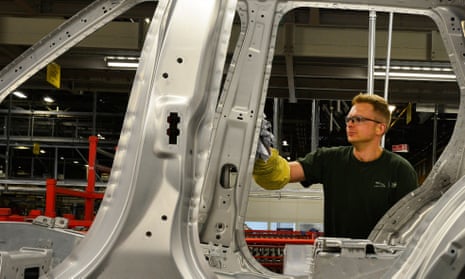UK factories entered 2016 in a “state of near stagnation” following a decline in output growth and new orders during December.
Firms blamed the weaker than expected growth on falling demand for consumer goods and machine tools, which have experienced a long slowdown in growth since a peak in 2014 apart from a recovery in the summer.
The disappointing figures from the pre-Christmas period meant Britain’s total manufacturing production over 2015 was lower than the previous year, according to the closely watched Chartered Institute of Procurement and Supply/Markit purchasing managers’ index (PMI) survey.
Seen alongside the official figures, which have shown outright declines in manufacturing output since last March, the figures will spook ministers concerned that Britain’s recovery is skewed towards the services sector and the consumption of imported goods.
The PMI survey posted a reading of 51.9 in December - where 50 separates growth from contraction.
This is down from 52.5 in November and the sector’s 16-month peak of 55.5 in October. Economists had expected growth in December to come in at 52.8.
However, the report pointed out that a 33rd consecutive month of expansion, which contrasts with many continental economies, was underpinned by higher domestic orders and exports to continental Europe, the US and China.
The report said the consumer goods sector remained the prime driver of production and new order growth, despite seeing its rates of expansion ease over the month.
It added that manufacturing costs continued to fall at a sharp pace during December, due to declines in the prices of oil and other commodities.
Martin Beck, the senior economic adviser to the Ernst & Young Item Club, said: “Manufacturing activity appears to have ended 2015 in a state of near stagnation.
“The weakening was broad based, with the consumer, intermediate and investment goods sub-sectors all seeing a deceleration in growth. Meanwhile, the rise in export orders was the weakest since September.”
He added that the recent boost to manufacturers from the drop in the price of oil, down almost 13% in December on the previous month, still left them struggling against the headwinds of sterling’s previous strength and problems in the world economy.
“Looking ahead manufacturing looks set to play firmly second fiddle to services in driving growth in 2016. However, the weakening in the pound since the autumn, as well as a modest pickup in global activity, should assist manufacturers selling abroad or competing with imports.”
Business groups have long pointed to the high pound and a lack of access for small and medium sized firms to bank finance as the main barriers to growth in the sector. Sterling remains high against the euro, which has come under pressure in the last year from the concerted actions of the European Central Bank to print money and drive down the value of the eurozone currency.
Rob Dobson, the senior economist at Markit, said: “This suggests that industry will make, at best, only a marginal positive contribution to broader economic growth in the final quarter of the year.”
Manufacturing accounts for about 10% of the UK economy.
